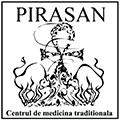Scleroderma – Sclerodermia
Sclerodermia este o boală autoimună care afectează pielea, vasele de sânge și organele interne. Această afecțiune multisistemică are o evoluție cronică și are la bază un dezechilibru între sinteza și degradarea colagenului, conducând la acumularea în exces și depozitarea acestuia și a altor proteine celulare în țesuturi. Asociază modificări inflamatorii vasculare și tulburări la…
